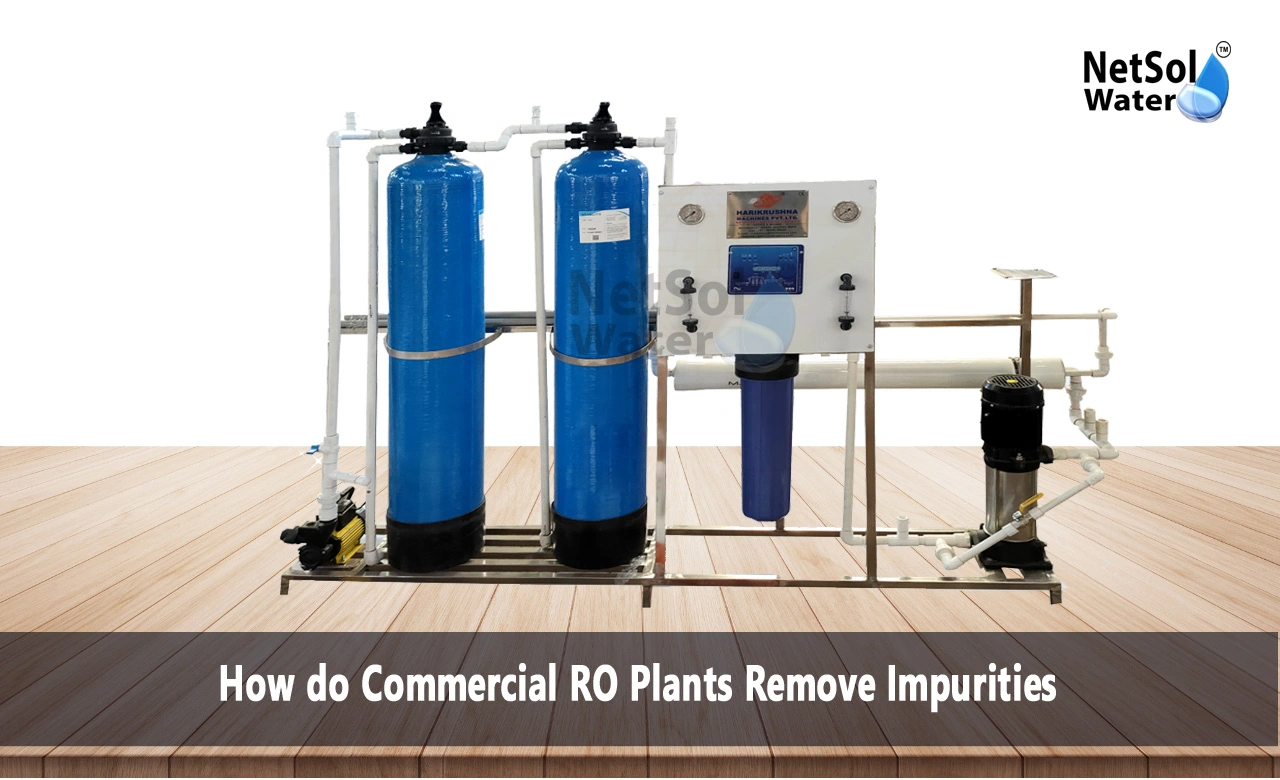How do Commercial RO Plants Remove Impurities?
Clean water scarcity outbreaks many locations worldwide. Commercial RO plants tackle this issue of cleaning water on a vast scale. These mechanical wonders take away impurities leaving behind crystal-clear H2O. Let's learn the inner workings of these plants.
The Basics of Reverse Osmosis
Reverse osmosis constitutes the core of these purification systems. It employs a semi-permeable membrane to filter out undesirable particles. Think of it as a super-fine strainer that only enables water molecules to flow through.
Nature's osmosis transports water from low to high solute concentration locations. RO flips this process upside down. We apply pressure to the concentrated side driving water through the membrane. This leaves behind pollutants creating pure water on the opposite side.
Components of a Commercial RO Plant
Commercial RO plants include of several main components:
1. Pretreatment System
2. High-Pressure Pump
3. RO Membrane Assembly
4. Post-Treatment System
5. Control and Monitoring Equipment
Each component plays a key function in the purifying process. Let's break them down and see how they contribute to clean water production.
Pretreatment
Water undergoes various preparation procedures before reaching the RO membrane. This prolongs membrane life and maintains maximum performance.
Typical pretreatment includes:
· Sediment Filtration: Removes bigger particles like sand and trash.
· Carbon Filtration: Absorbs organic substances and chemicals.
· Water Softening: Prevents scale accumulation in hard water locations.
· Chemical Addition: Protects membranes with antiscalants and pH adjusters.
Pretreatment gives the cleanest possible water to the RO membranes. This maximizes efficiency and decreases maintenance needs.
High-Pressure Pump
The high-pressure pump pumps pretreated water through RO membranes. These pumps function as the main park of the system. They create the necessary pressure to counteract osmotic forces and propel water through the membranes.
Pressure needs vary depending on water source and intended output. Seawater desalination plants typically run at 800 to 1200 psi. That's a ton of pressure!
RO Membrane Assembly
The RO membrane assembly constitutes the centre of the purification process. It separates water from pollutants. Commercial plants use numerous membrane elements organized in pressure vessels.
Each membrane element comprises three layers:
1. Polyester support web
2. Microporous polysulfone interlayer
3. Ultra-thin polyamide barrier layer
The polyamide layer does the heavy lifting. At just 0.2 micrometers thick it rejects dissolved solids while allowing water molecules to pass.
The method creates two streams:
· Permeate: Purified water that penetrates through the membrane
· Concentrate: Rejected water containing concentrated pollutants
Plants typically dispose of or treat the concentrate stream.
Post-Treatment
RO-treated water emerges exceedingly pure – often too pure for immediate use. Post-treatment modifies water chemistry for its intended function.
Post-treatment may include:
· Remineralization: Adds back beneficial minerals
· pH Adjustment: Balances pH to prevent corrosion
· Disinfection: Adds modest amounts of chlorine to prevent bacterial growth
The particular stages depend on the water's intended purpose.
Control and Monitoring
Commercial RO plants require continual monitoring and adjustment. Advanced control systems utilize sensors and PLCs to track:
· Pressure
· Flow rates
· Temperature
· Conductivity
· pH
These technologies automatically improve performance and notify operators to concerns.
Efficiency and Recovery
Plant efficiency typically measures the percentage of feed water converted to permeate. Recovery rates vary but normally range from 50% to 85%.
Higher recovery rates use feed water more efficiently. However they enhance scaling and fouling issues. Operators must combine efficiency with membrane longevity.
Dealing with Membrane Fouling
Membrane fouling poses a serious challenge for RO plant operation. It diminishes effectiveness and increases energy consumption.
Fouling kinds include:
· Organic fouling: Caused by natural organic matter
· Inorganic fouling: Caused by mineral scale buildup
· Biofouling: Caused by microbial growth
· Colloidal fouling: Caused by tiny particles
Plants combat fouling through:
· Careful pretreatment
· Regular membrane cleaning
· Optimized operating conditions
Innovations in RO Technology
RO technology continuously evolves. Recent developments include:
· Low-Pressure Membranes: Reduce energy consumption
· Anti-Fouling Membranes: Resist contaminant buildup
· Energy Recovery Devices: Capture energy from concentrate streams
· Advanced Monitoring Systems: Use AI to optimize performance
These innovations enhance efficiency cost-effectiveness and environmental impact.
Conclusion
Commercial RO plants transform useless water into a valuable resource for communities and enterprises worldwide. They demonstrate extraordinary engineering and play a significant role in tackling global water concerns.
As we address rising water concerns commercial RO plants remain at the front of assuring clean water access. Whether desalinating saltwater treating industrial wastes or purifying groundwater these plants assure our sustainable water future.
To explore customised commercial RO plants, Industrial RO plants, ETP or STP solutions for your needs in your areas and nearby regions, contact Netsol Water at:
Phone: +91-965-060-8473, Email: enquiry@netsolwater.com



